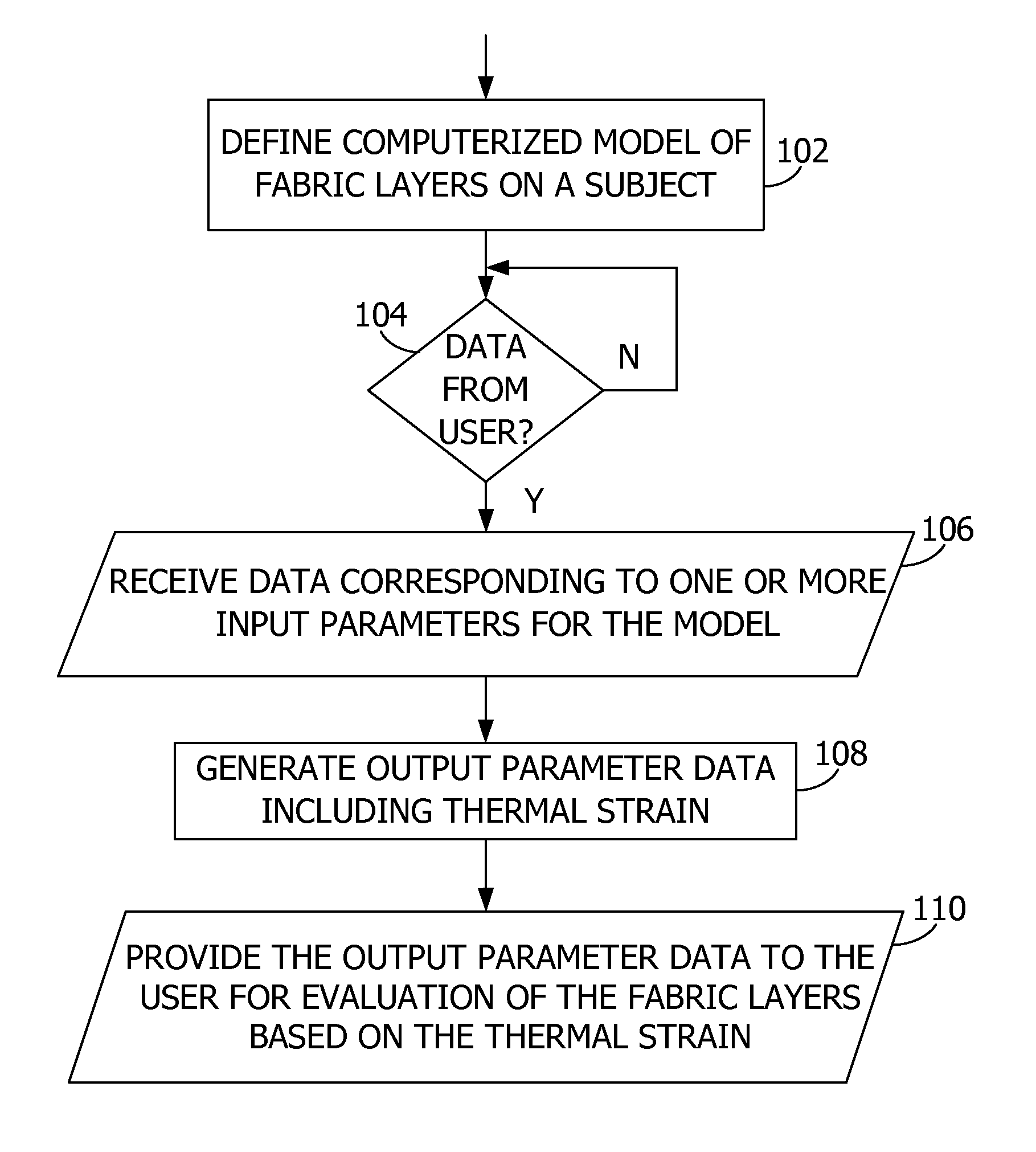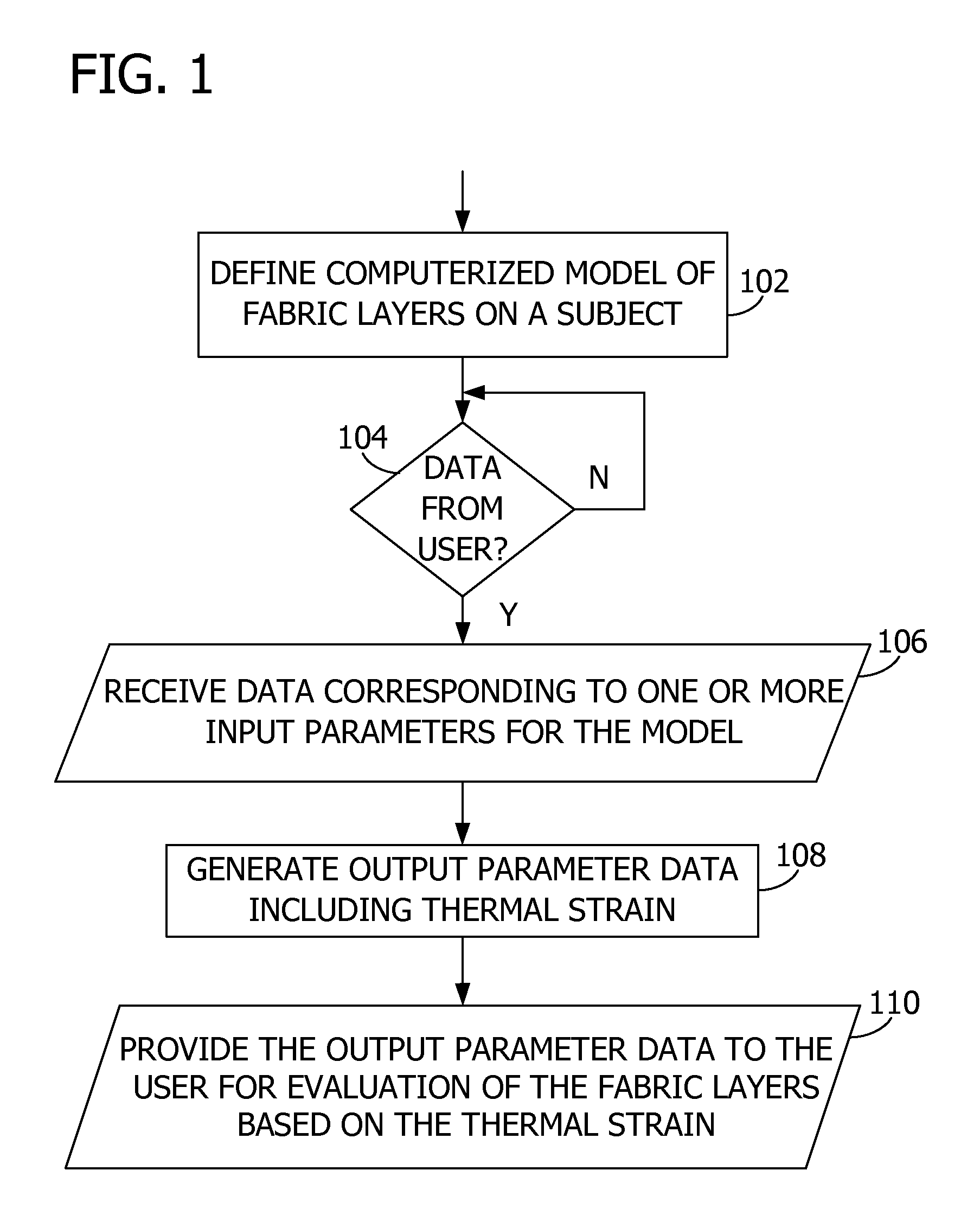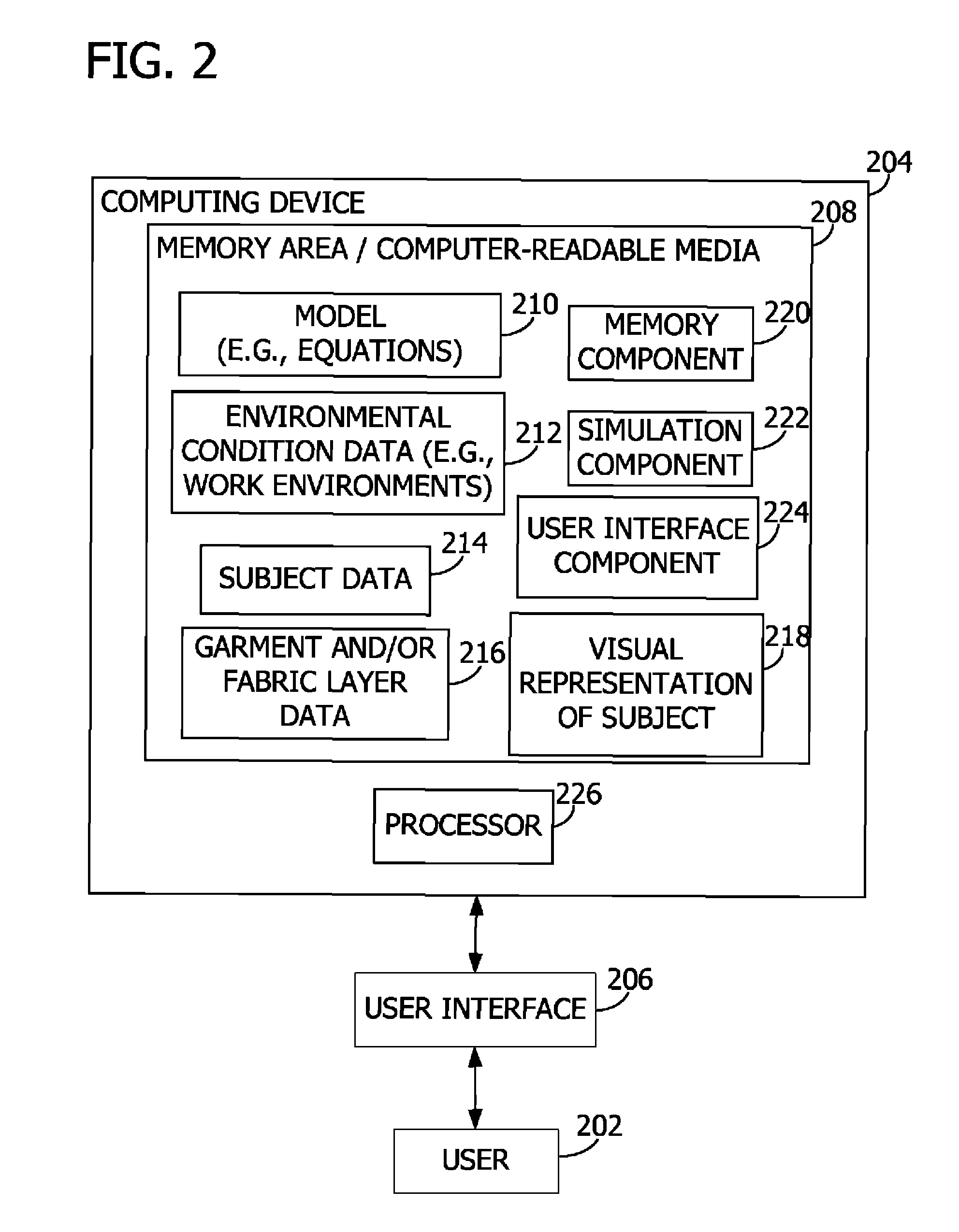User interface for modeling thermal comfort
- Summary
- Abstract
- Description
- Claims
- Application Information
AI Technical Summary
Benefits of technology
Problems solved by technology
Method used
Image
Examples
Embodiment Construction
[0025]Embodiments of the invention predict thermal strain on a subject such as shown in FIG. 1. In an embodiment, the thermal strain is a function of subject data, fabric data, and environmental condition data. The fabric data corresponds to a plurality of fabric layers such as an inner layer and an outer layer separated by a gap. In an embodiment, the thermal strain is represented by a visual representation of the subject with the fabric layers. Other aspects of the invention provide an interactive model enabling users to provide and adjust input data to compare and evaluate fabric layers. Users may provide input data corresponding to particular garments to predict and compare the thermal strain resulting from the garments being worn by the subject. For example, aspects of the invention predict the physiological response by the subject to a particular user activity level, external environment conditions, and clothing layers including protective garments.
[0026]It will be appreciated...
PUM
 Login to view more
Login to view more Abstract
Description
Claims
Application Information
 Login to view more
Login to view more - R&D Engineer
- R&D Manager
- IP Professional
- Industry Leading Data Capabilities
- Powerful AI technology
- Patent DNA Extraction
Browse by: Latest US Patents, China's latest patents, Technical Efficacy Thesaurus, Application Domain, Technology Topic.
© 2024 PatSnap. All rights reserved.Legal|Privacy policy|Modern Slavery Act Transparency Statement|Sitemap



